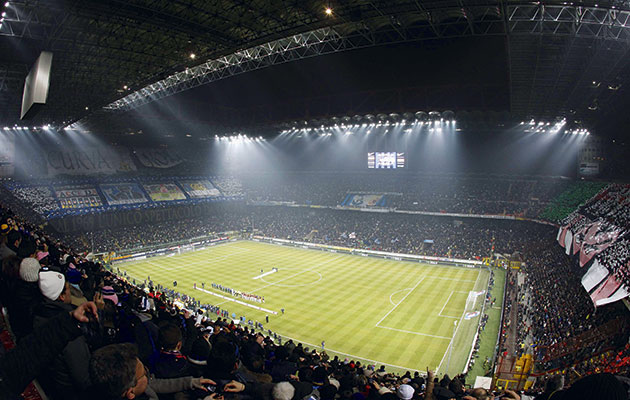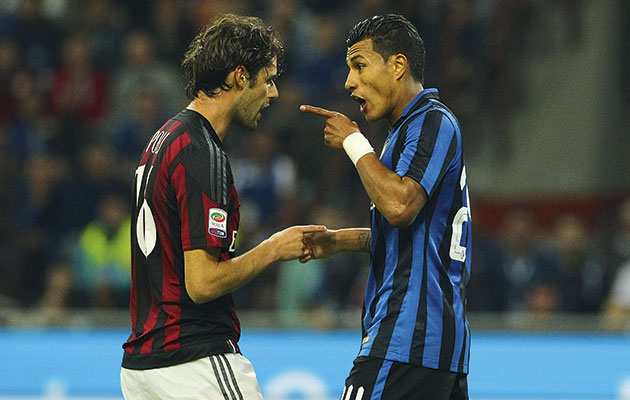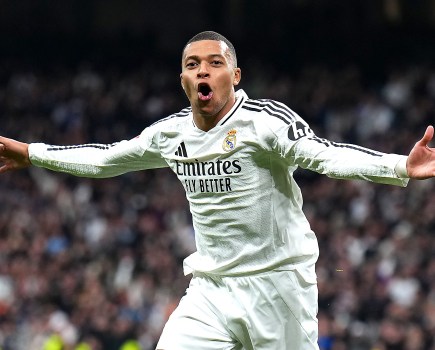The world’s most celebrated shared-stadium, cross-city derby will soon be over. When Milan leave San Siro for their own new-build arena in nearby Portello as planned in 2020, they will close the door on seven decades of a rivalry based at the largest football arena in Italy.
Due to host next year’s Champions League Final, the 80,000-capacity San Siro is a football temple bar none.
It was Milan, under the leadership of then-president Piero Pirelli, who built the San Siro in 1926. Designed specifically for football, it would also become the home of city rivals Internazionale in 1947.
With no running track and with four stands making a rectangular shape around the pitch, the San Siro has not lost its shape, style or staying power despite three major overhauls.
Tyre magnate Pirelli had taken over the Rossoneri of Milan in 1909 and, as opposed to the other stadia being built across Mussolini’s Italy, he wanted his San Siro laid out like the traditional grounds in England, with the crowd up close. This may well have been a result of Pirelli’s formative years in regular contact with the English founders of his Milan club in 1899.
The rivalry dates back to 1908 when Italian and Swiss members of the Milan club, unhappy with its British influence, broke away to form Inter.
The fixture between the two became known as the “Derby della Madonnina” in reference to the statue atop the landmark Duomo cathedral that dominates the city centre. Unlike Rome’s Olimpico, with its running track, which city rivals Roma and Lazio share, San Siro is the perfect stage for the big occasion.

Supporters hang over the pitch in steep-sided tiers from where you can smell the turf near the touchline. And all across town, families, friends and colleagues part ways for match day.
Milan’s cocktail-drinking image has since given way to a working-class one, with their blue-collar followers becoming known as “cacciavite” (screwdrivers).
Inter, meanwhile, began to attract high society once oil magnate president Angelo Moratti took over after the war, with his son Massimo witnessing the legendary 6-5 game of 1949 on his derby debut.
In 1955, San Siro was revamped, given another tier and its distinctive candy-twist appearance around the outside. Capacity touched six figures and 100,000 squeezed in to see Italy beat Brazil in 1956.
By the early 1960s, San Siro was in its pomp. With Moratti and mercurial coach Helenio Herrera at the helm, Inter matched Milan’s 1963 European Cup win.
The next golden age came in the run-up to the 1990 World Cup. With Ruud Gullit and key Dutch stars winning European Cups for Milan, and soon-to-be world champion Lothar Matthaus leading title-winning Inter, the city was the centre of the football universe, confirmed by its hosting of the curtain-raiser for Italia 90.
For the tournament, a plexiglas roof with distinctive red girders was added to the stadium, as well as a third ring to take the all-seated capacity to over 80,000.
After these two periods of joint Milanese success at home and abroad, Inter’s star faded and an incoming Massimo Moratti, son of Angelo, presided over a decade of humiliation while Silvio Berlusconi’s Milan remained dominant.

When Inter’s chance came to match Milan with a meeting in the Champions League semi-final of 2003, they lost on away goals. While tempers frayed amid Interisti in the Curva Nord, Milan’s Curva Sud celebrated in style. Two years later, a clash at the same stage of the competition ended violently when Milan goalkeeper Dida was felled by a fan’s firework with Milan leading 3-0 on aggregate.
Despite the downfall of Berlusconi and Moratti’s sale to an Indonesian magnate, Milan against Inter at San Siro remains one of Europe’s big occasions…until 2020 and almost certainly beyond.
This article was first published in the December 2015 issue of World Soccer, as part of our celebration of the 50 greatest rivalries of world football.








